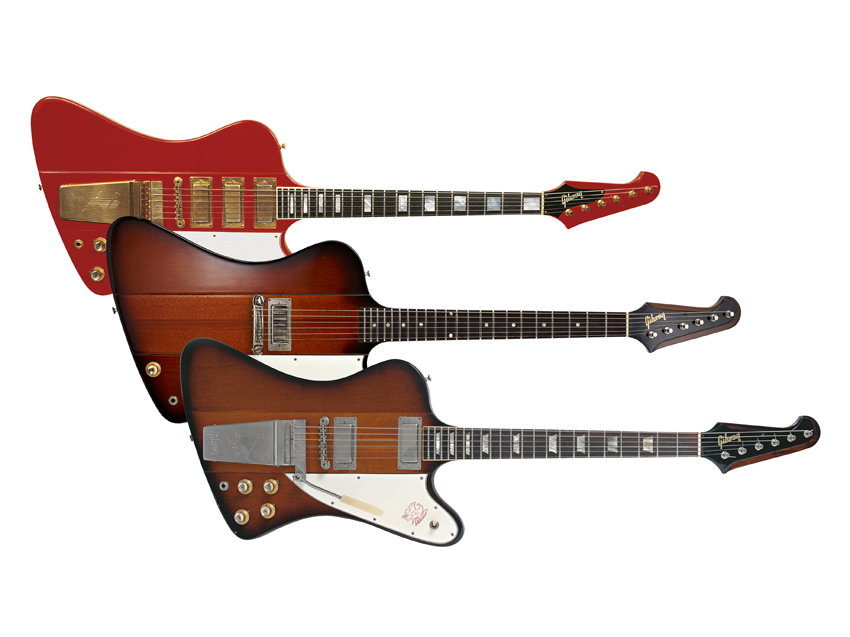
The evolution of the Gibson Firebird
Few guitars have seen so many changes as Gibson’s Firebird. From the classic 60s ‘reverse’ models to today’s ‘love-it-or-loathe it’ Firebird X, it’s a guitar that inspires emotion with its unique looks, biting tone and underdog cool.
Here, we take a stroll through the Firebird’s fascinating evolution, and reveals how to identify the key models in this famous flock...
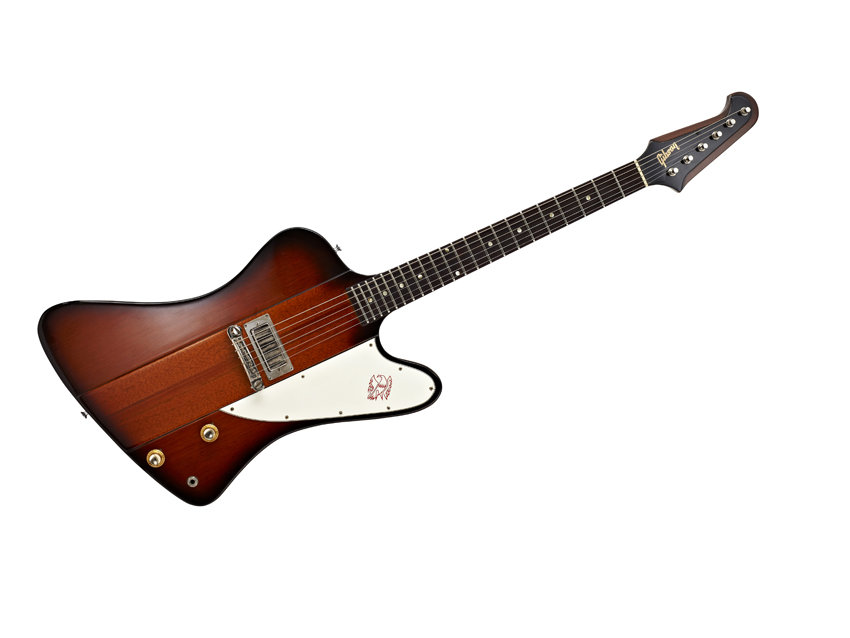
Firebird I (Reverse)
At Gibson in the early 60s, coming down from the high of 1958 must have been a difficult proposition.
After all, that was the year Gibson released the futuristic Explorer and Flying V, as well as the innovative ES-335 and 355, slapped some Sunburst on the Les Paul, made a double-cutaway out of the Les Paul Junior and Special, and offered its first doubleneck electrics. All in one year. The company wasn’t going to top that in a hurry. So, what next?
Gibson began a big expansion of its Kalamazoo factory during 1960, more than doubling its size upon completion the following year. Among the firstborn within the new walls was a revised line of Les Pauls, with Gibson completely redesigning the Junior, Standard and Custom with a modern, sculpted double-cutaway body. At first it called them Les Pauls, but during 1963 renamed them the SG Junior, the SG Standard, and the SG Custom.
Despite all this invention, something was bothering the bosses upstairs: Fender was selling more and more guitars as every month passed. The first Fender solidbody electric had come out in 1950, but now, a dozen or so years later, the Californian company had a line of four great electrics – Telecaster, Stratocaster, Jazzmaster and Jaguar – as well as budget models. Fenders looked and sounded fresh, new and different. Gibson’s managers must have felt their guitars seemed old and fusty by comparison.
The company had been around a long time, and its reputation was based on long-founded production methods and traditional values. Gibson’s first reaction to Fender’s solidbody revolution was the original Les Paul model of 1952.
Next, it decided to try to upstage what it saw as Fender’s edgy, modern style with the angular Explorer and Flying V. But by the early 60s, however, it was clear Gibson needed something else to weather the storm blowing in from the West Coast.
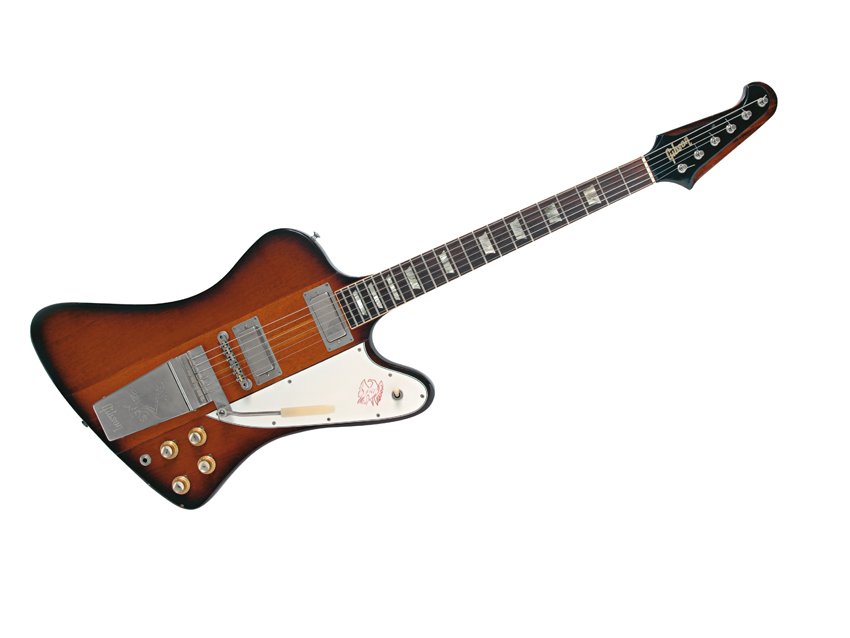
Firebird V (Reverse)
So, it was that in 1963, Gibson introduced its new Fender-rivalling solidbody, the Firebird. The design had strong links with the failed Explorer, which had already been discontinued.
Nonetheless, Gibson hoped that a new spirit of innovation would win the day. The company hired an outside designer to create the Firebird, someone who would not be limited by traditional approaches to guitar design and who would reconsider the way an electric could look and work.
Ray Dietrich had been a legendary car designer for 50 years. He started in the drawing office of a small company in 1913, and over the next few decades established the idea of the custom car- body designer.
Based in New York City and then Detroit, Dietrich headed a number of firms, including his own, LeBaron Carrossiers, designing and building luxury car bodies and working for brands such as Lincoln, Packard, Duesenberg and Ford. Some of his best work was done in the 30s, when he designed the striking Chrysler Airstream.
He founded Raymond Dietrich Inc in 1949 in Grand Rapids, Michigan. Four years later he returned to consulting work, and in 1960, at the age of 66, he retired to Kalamazoo.
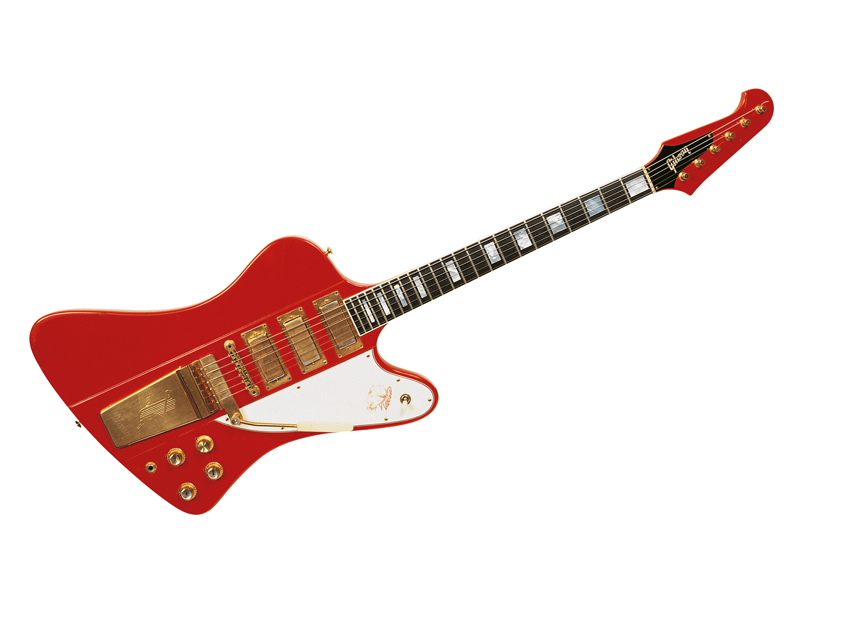
Firebird VII (Reverse)
One of the ways Dietrich whiled away his retirement was to give talks on his life in car design. Gibson boss Ted McCarty happened to go along to one, and afterwards, he introduced himself and asked if Dietrich would be interested in designing a guitar.
Dietrich agreed, and Gibson hired him to devise a new solidbody electric line. He eventually came up with the design we know as the Firebird, but at first it didn’t have a name.
“I was sitting in my office one day with Ray and a couple of the other fellas,” McCarty later recalled, “and we were trying to come up with a name for this thing. He said, ‘Why don’t you call it Phoenix?’ I said, ‘Phoenix, that’s the firebird, the old story of rising from the ashes.’ So, that’s where the name Firebird came from. And Ray also designed the firebird logo that’s on the pickguard.”
The new models appeared in Gibson’s 1963 catalogue, with the blurb insisting the Firebirds were a “revolutionary new series of solidbody guitars. Exciting in concept, exciting to play. You’ll find a whole new world of sound and performance potential... plus that sharpness in the treble and deep, biting bass... A completely new and exciting instrument that offers all the sound, response, fast action, and wide range that could be desired.”
There were four Firebirds for the 1963 launch – I, III, V, and VII – each with different appointments but following the same overall design and build. The missing numbers II and IV went to two complementary Thunderbird basses, but there was no VI.
Gibson announced the new line just before the July 1963 NAMM show in Chicago, and they first appeared on a July price list, with production starting about three months later.

Firebird I (Non-Reverse)
The Firebirds were the first Gibson solidbodies with through-neck construction. All Gibsons until now had a glued-in set neck, and Fender used a screwed-on neck joint. Some guitar makers felt that through-necks gave better sustain and tone.
For the Firebirds, Dietrich had a central multi-laminate mahogany-and- walnut section running the length of the guitar, providing the 22-fret neck and the mid portion of the body in a single unit. Two slightly thinner mahogany ‘wings’ were glued on, completing the body, so the mid portion of the body was stepped a touch higher than the wings, forming a sort of central shelf, four inches wide, on which sat the pickups, bridge and tailpiece. The back of the body had a gentle contour at the top, a feature better known on Fenders and designed for player comfort.
The elongated body – something like an Explorer with curves – had a horn- less upper section that made the lower horn appear to stick out further than it really did. It made for an almost- unbalanced but quite pleasing look, which is why we call these original models the ‘reverse body’ or simply ‘reverse’ Firebirds. A thoughtful touch was the inclusion of three strap buttons, providing a choice between neck heel or top horn.
There were rosewood fingerboards for the I (1963 list price $189.50), III ($249.50) and V ($325), while the VII ($445) had ebony, with binding on the III, V and VII, and dot markers (I, III), trapezoid (V) or blocks (VII). There was a single mini-humbucker at the bridge on the I, two on the III and V, and three on the VII.
The I had a simple wraparound bridge-tailpiece; the III had a stud-style bridge and simple Gibson/Maestro Vibrola unit; and the V and VII came with a Tune-O-Matic bridge and a Deluxe Gibson/Maestro Vibrola, with a decorated cover. The metalwork was nickel-plated on the I, III and V, and gold-plated on the VII. The VII was Gibson’s most expensive single-neck solidbody electric, listing $20 higher than a Les Paul Custom. The least expensive Firebird I sat a touch below the $210 SG Special.

Firebird III (Non-Reverse)
It got weird at the headstock, a kind of flipped-Fender shape. The low E string fed the furthest tuner, the opposite of how a Fender head worked.
The six Klusons were banjo-style tuners, with string-anchors on the treble side of the head and buttons protruding from the rear, hidden from a front view. You had to reach around in an unfamiliar way to tune the thing. Fender was having some success with its optional Custom Colors, so Gibson followed suit with the Firebirds.
Standard finish was Sunburst, but Dietrich and Gibson borrowed the Fender idea, even issuing a special colour chart, just like Fender. “The showmanshipofcustomcoloristhat finished, professional touch,” said the chart, “the extra drama and flair that sells a combo! There are 10 beautiful Gibson custom colours – one that suits you and your personality perfectly.”
The colours (Poly denoted a metallic finish) were Cardinal Red, Ember Red, Frost Blue, Golden Mist Poly, Heather Poly, Inverness Green Poly, Kerry Green, Pelham Blue Poly, Polaris White and Silver Mist Poly.
Gibson’s colours were similar (at least) to existing Fender colours, with Golden Mist Poly being identical to Fender’s Shoreline Gold Metallic. Pelham Blue and Cardinal Red were the two most requested Firebird colours, some way behind the much more popular regular Sunburst. A custom colour added just $15 on top of a regular Sunburst list price in 1963.
By the start of 1965, Gibson’s managers knew they had a problem. The Firebird was a difficult and expensive guitar to make, and the disadvantages of employing an outside designer who did not understand guitar production were becoming clear.
In the factory, if a neck were to develop a fault, then the through-neck design meant that a good portion of the body, too, was lost. The intricacies of the laminate through-neck, the carving, the tricky wiring – all added to production time and costs.
Out in the real world, Firebirds were prone to breakages at the fragile head/neck junction. Some of the breaks even happened while the guitar was still in its case, where the crucial intersection was unsupported.
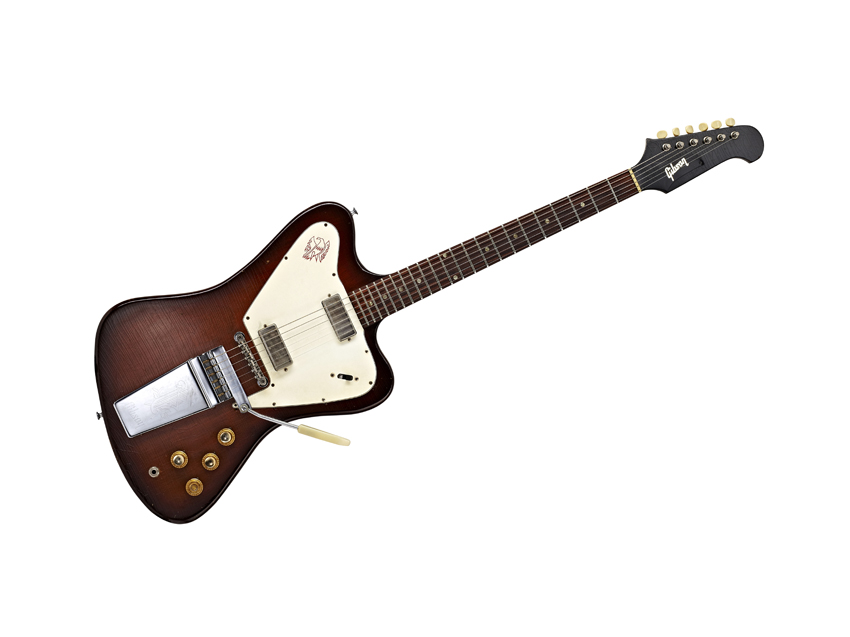
Firebird V (Non-Reverse)
Gibson wound down production of the original Firebirds and devised new versions with simpler construction and a different design.
It’s been said that Fender threatened to sue Gibson over the design of the original reverse Firebird, because of Fender’s existing offset-waist body on its Jazzmaster and Jaguar, and that this was the reason Gibson was forced to change the first Firebird design.
But this seems unlikely. Fender was certainly annoyed, publishing an ad showing the Jazzmaster and Jaguar below a headline that read: “The Most Imitated Guitars In The World.” But Fender had little scope for legal action.
It had only a simple design patent for the Jazzmaster, which was granted in December 1959; Fender described the Jazz and Jag’s Offset Contour Body as ‘patent pending’.
The most obvious change to the line of brand-new Firebirds that appeared in 1965 was a slightly more conventional body shape, looking as if the original had been flipped upwards and over.
As a result, we call these the ‘non-reverse’ Firebirds, in contrast to the earlier ‘reverse’ body. Gone was the through- neck and the body ‘shelf’, replaced with Gibson’s conventional glued-in neck. The pickups on the two cheaper models were regular P-90 single coils, and the headstock was more Fender-like and came with regular tuners.
The new Firebirds first appeared on the June 1965 pricelist, with a sizeable price cut. The final reverse Firebirds had listed at $215 (I), $280 (III), $360 (V), and $500 (VII). The non-reverse line was notably cheaper: $189.50 (I), $239.50 (III), $289.50 (V), and $379.50 (VII).
Gibson briefly made a 12-string Firebird V, too, introduced in 1966. But the changes were not enough to stop a decline in sales of the non-reverse Firebird models during the 60s. At the end of the decade, the Firebirds were finally dropped.
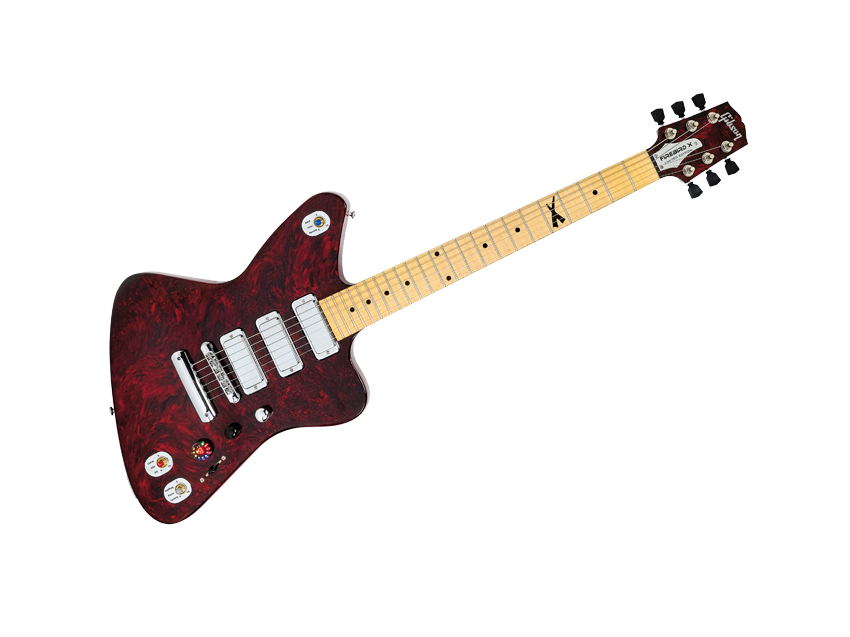
Firebird X
Two short-lived reappearances were the limited-edition ‘Medallion’ model in 1972, and the Firebird 76, a sort of Firebird III with an unbound fingerboard and gold-plated metalwork.
It was hard to ignore the influence of the Firebird shape on Gibson’s RD guitars from the late 70s – a largely unsuccessful attempt to popularise onboard electronics. Gibson stayed quiet with the Firebird through the 80s, probably not encouraged when a further attempt at Fender-like styling, the Victory, failed.
There was some dabbling with ’bird reissues in the early 90s and some full- tilt remakes in 2000. The III, V and VII survive in the current line, where you’ll also find a Studio ’70s Tribute model. Gibson usually loves signature guitars, but only one artist-model Firebird has appeared, the limited-edition Johnny Winter model of 2008/2009. The peculiar Firebird X heaved into view in 2010, a heavily adapted take on a non- reverse Firebird with Robot tuning and onboard paraphernalia.
But the originals still have a certain something, and in the midst of all those Roman numerals, it can be tricky to remember which model is which. So, to finish, here’s a one-stop guide to ’bird spotting...
One pickup is always a reverse I. With two pickups, a reverse is either a III (dot markers) or a V (trapezoids), while a dual-pickup non- reverse model is a I (P-90s) or a V (mini- humbuckers). With three pickups, a reverse is always a VII, and a non is a III (P-90s) or a VII (minis). So, now you’re fully armed to grab a YouTube clip and say: “Ah, that’s Dave Mason with a reverse V” or “Here’s Brian Jones with a non-reverse III.” Or, more simply: “Now, there’s a nice, underrated guitar.”
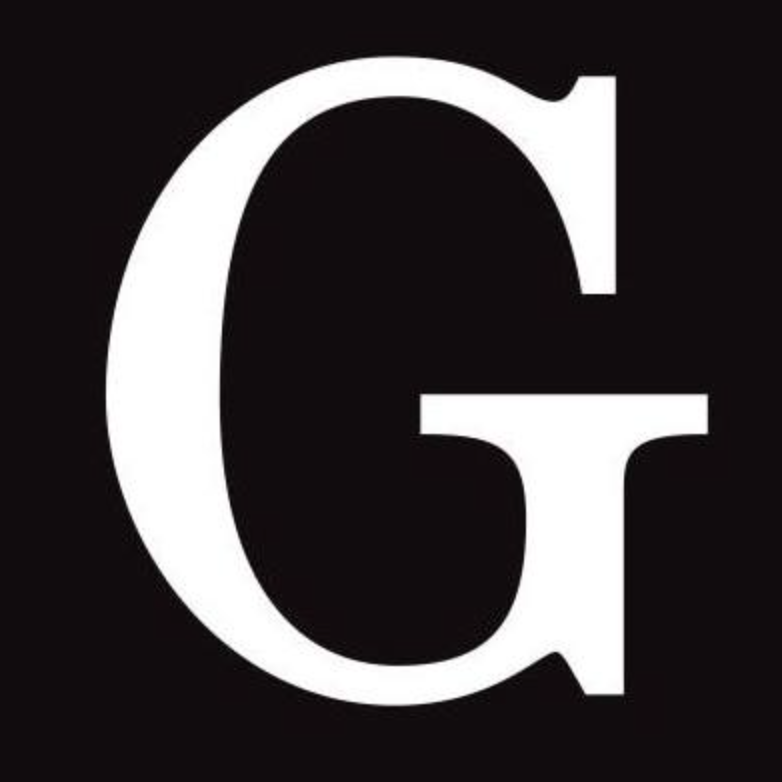
Guitarist is the longest established UK guitar magazine, offering gear reviews, artist interviews, techniques lessons and loads more, in print, on tablet and on smartphones
Digital: http://bit.ly/GuitaristiOS
If you love guitars, you'll love Guitarist. Find us in print, on Newsstand for iPad, iPhone and other digital readers

